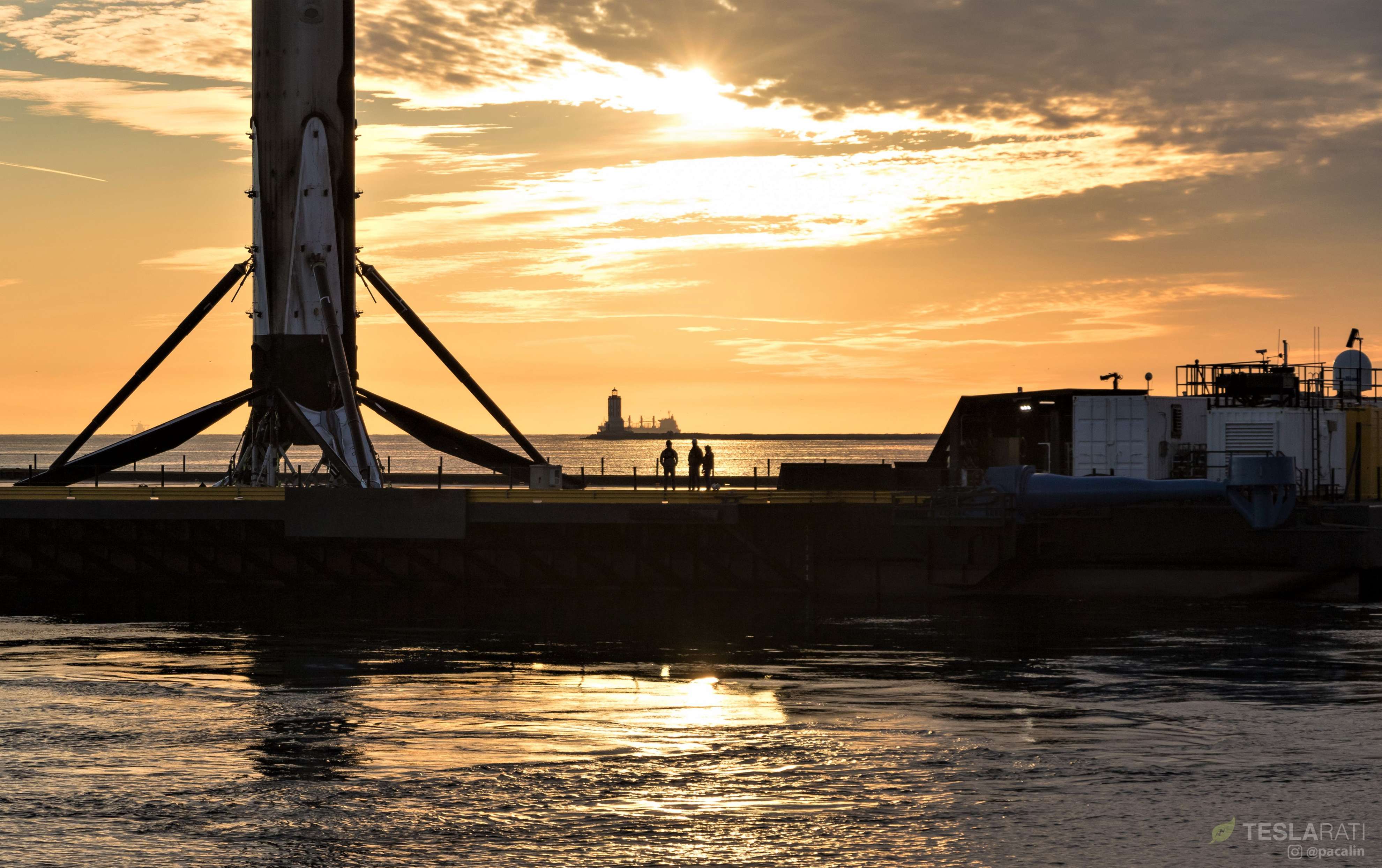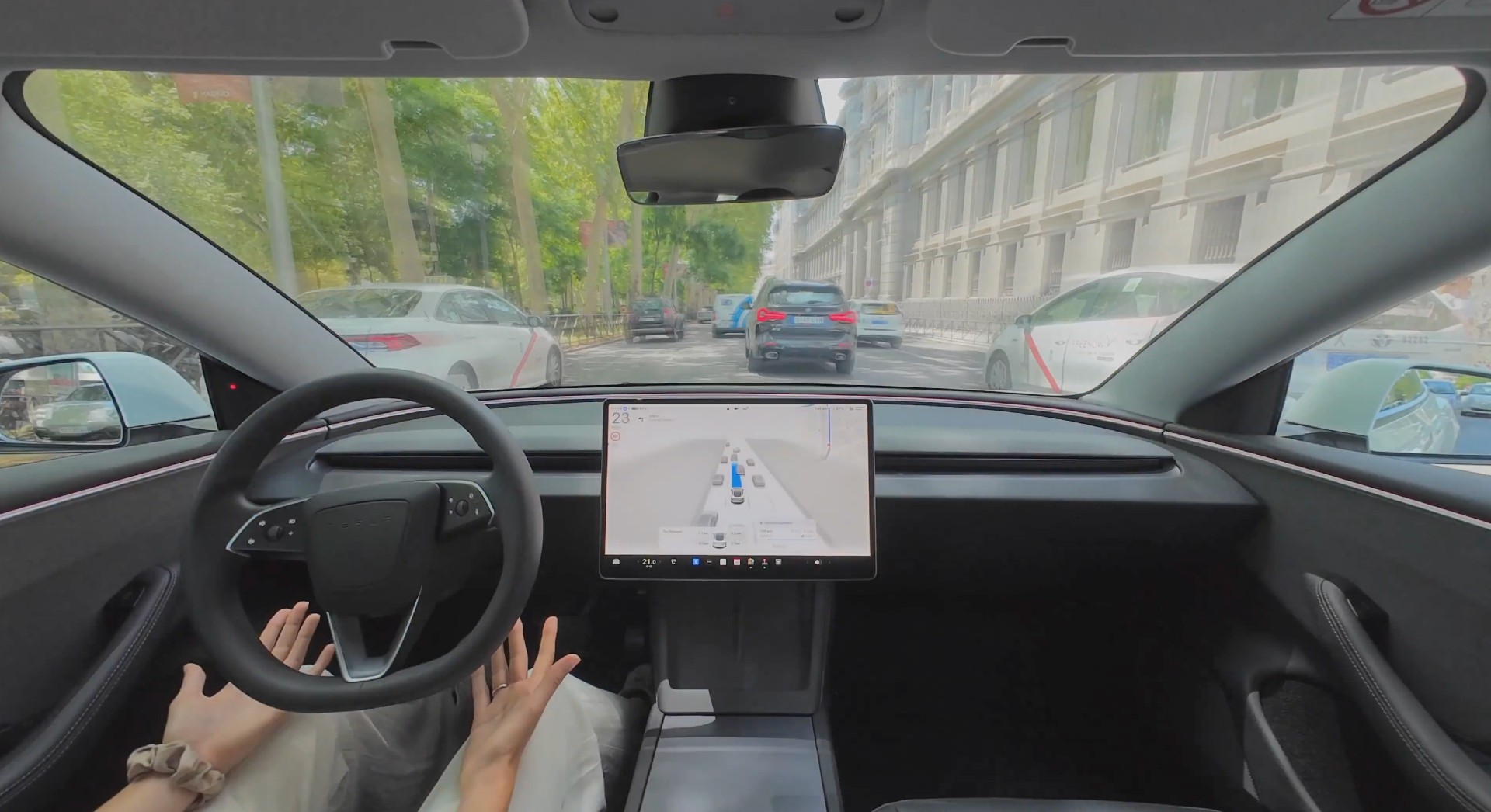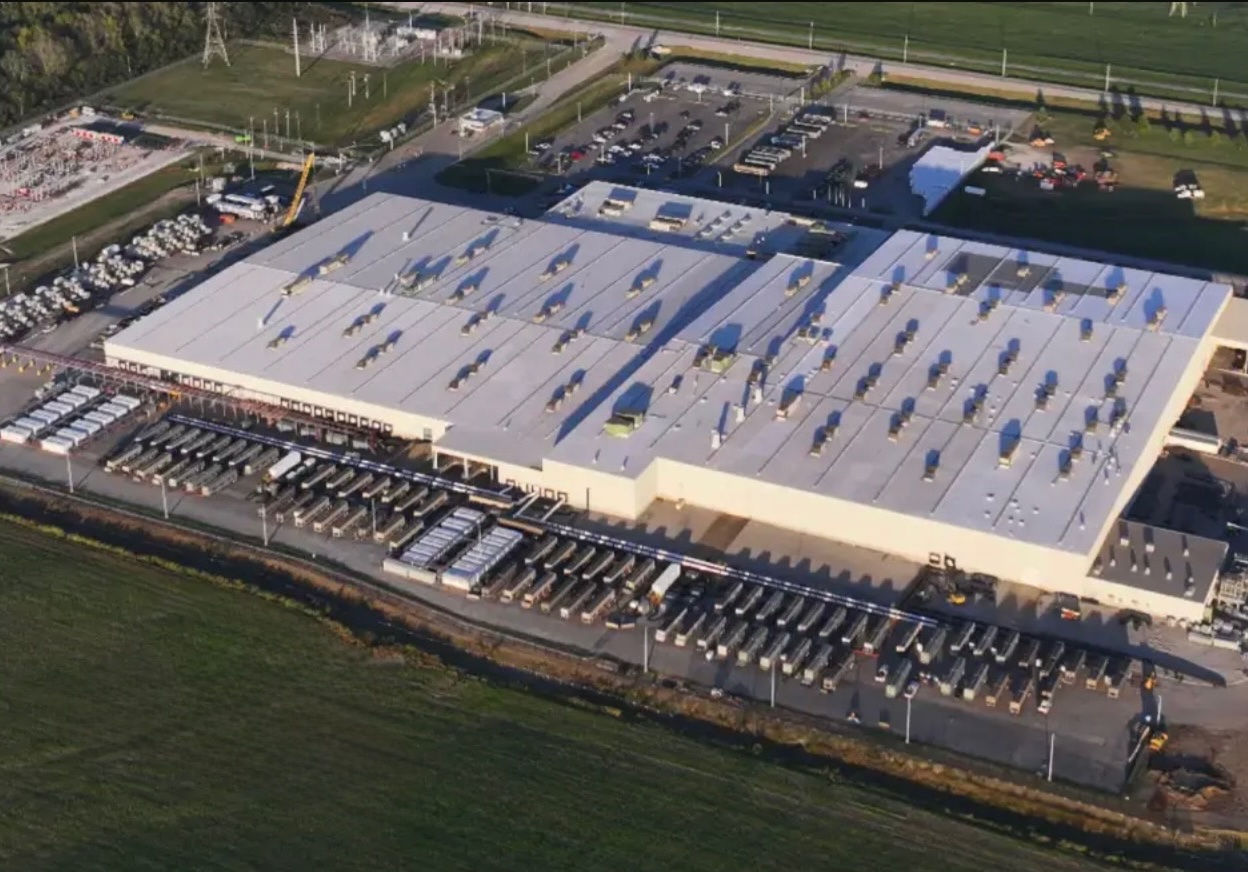

News
SpaceX closes in on West Coast Starlink launches with lease for drone ship dock space
Amid a major hiring push and calls for monthly launches, SpaceX has taken its latest step towards launching Starlink satellites from the West Coast with a lease for rocket recovery ship dock space at the Port of Long Beach.
News of the port lease broke on April 26th with a tweet from the mayor of Long Beach, California after the Port of Long Beach (POLB) Commission voted to approve SpaceX’s 24-month sublease with an effective start date of May 1st, 2021. From 2014 to 2020, a massive floating rocket launch complex and associated service ships once used by SeaLaunch called POLB’s Pier 16 home while mothballed and the company left behind a decent amount of infrastructure when it vacated the facility last year.
That includes a ~5600 square meter (~65,000 sq ft) warehouse and office space formerly used to process SeaLaunch payloads and Ukrainian Zenit rockets, as well as a pier and dock space generally optimized for loading and unloading large rockets from rocket transport ships. In other words, Pier 16 is a perfect fit for SpaceX’s needs.
The news came as a surprise because SpaceX already has a lease for several berths and dock space at Port of San Pedro, which – along with Port of Long Beach – makes up the greater Port of Los Angeles. SpaceX has used those facilities for the better part of a decade – initially to support Dragon spacecraft recoveries but later as a hub for drone ship Just Read The Instructions (JRTI) and fairing recovery ship Mr. Steven (later Ms. Tree).
SpaceX has a bit of a sordid history with port leases over the last several years after twice entering and backing out of Port of Los Angeles (San Pedro) lease agreements to build a Starship factory directly on the water in 2018 and 2020. This time around, POLB commission documents indicate that this new lease is not the third in a line of ill-fated Starship factory plans – but instead a simple relocation of existing West Coast Falcon rocket recovery operations just two miles east of their current home.
It’s unclear why exactly SpaceX is leasing much larger berth and dock space at a port in competition with its current Port of Los Angeles landlord or if Pier 16 will be an addition to – or a replacement for – its current berths to the west. At approximately $100,000 per month, Pier 16 will be substantially more expensive, ruling out cost savings, which could mean that SpaceX has reason to believe that its West Coast rocket recovery operations are going to experience a substantial uptick in activity in the near future.
Indeed, in retrospect, SpaceX’s current Port of San Pedro berths and dock space have always been fairly limited, offering just enough space for a few small tents on concrete and a drone ship and two support vessels to park end to end. Assuming SpaceX moves all operations to Pier 16 and closes out its San Pedro lease, the new facilities should offer a bit more dock space along the pier itself, as well as far more room – and an existing warehouse with offices – to process recovered Falcon boosters and fairings.
Over half a decade of operations, SpaceX recovered Falcon boosters with drone ship JRTI just seven times (of eight attempts) on the West Coast, making it clear why the company simply chose to make do with close quarters and a barebones dockside setup. Now, however, SpaceX appears to be preparing its Vandenberg Air Force Base (VAFB) launch site and associated Port of LA recovery assets for a far more ambitious period of Falcon 9 launch activity.
Other observations support that conclusion. Over the last six or so months, SpaceX has been aggressively hiring to fully outfit its VAFB SLC-4 launch pad after supporting just two West Coast launches in the last ~28 months. Most notably, hiring ‘flyers’ distributed on social media by SpaceX employees touted a target of monthly launches from the company’s West Coast pad – an unprecedented cadence over the decade SpaceX has leased it.
First reported by Spaceflight Now, SpaceX President and COO Gwynne Shotwell recently revealed that the company intends to begin dedicated polar Starlink launches from Vandenberg as early as this summer – July 2021 if taken literally. Other “industry officials” reportedly corroborated those plans.
With its hiring campaign finally starting to slow down and a new Port of Long Beach lease set to open on May 1st, the only real ‘missing link’ for SpaceX’s plans to restart regular West Coast Falcon 9 launches is the fleet of ships the company will need to recover Falcon boosters and payload fairings. To maximize efficiency, dedicated polar Starlink launches will require Falcon 9 boosters to land far downrange and will be even more challenging than the rocket’s now-routine missions to low Earth orbit (LEO), which require almost every ounce of performance the rocket can give.
SpaceX transported its second drone ship – Just Read The Instructions (JRTI) – across the Panama Canal from Port of LA to Port Canaveral, Florida in 2019, where it still operates today. To achieve SpaceX’s planned cadence of up to 48 launches in 2021, the company will almost certainly need both drone ships on the East Coast. A third drone ship – named A Shortfall Of Gravitas (ASOG) – has been in the works for years, though SpaceX CEO Elon Musk has long described the vessel as an addition to the company’s Florida fleet that would enable Falcon Heavy to land all three first-stage boosters at sea for maximum payload capacity.
For now, we’ll just have to wait and see if SpaceX intends to send that third drone ship directly to California to support an imminent series of polar Starlink launches.
Elon Musk
Why Tesla’s Q3 could be one of its biggest quarters in history
Tesla could stand to benefit from the removal of the $7,500 EV tax credit at the end of Q3.

Tesla has gotten off to a slow start in 2025, as the first half of the year has not been one to remember from a delivery perspective.
However, Q3 could end up being one of the best the company has had in history, with the United States potentially being a major contributor to what might reverse a slow start to the year.
Earlier today, the United States’ House of Representatives officially passed President Trump’s “Big Beautiful Bill,” after it made its way through the Senate earlier this week. The bill will head to President Trump, as he looks to sign it before his July 4 deadline.
The Bill will effectively bring closure to the $7,500 EV tax credit, which will end on September 30, 2025. This means, over the next three months in the United States, those who are looking to buy an EV will have their last chance to take advantage of the credit. EVs will then be, for most people, $7,500 more expensive, in essence.
The tax credit is available to any single filer who makes under $150,000 per year, $225,000 a year to a head of household, and $300,000 to couples filing jointly.
Ending the tax credit was expected with the Trump administration, as his policies have leaned significantly toward reliance on fossil fuels, ending what he calls an “EV mandate.” He has used this phrase several times in disagreements with Tesla CEO Elon Musk.
Nevertheless, those who have been on the fence about buying a Tesla, or any EV, for that matter, will have some decisions to make in the next three months. While all companies will stand to benefit from this time crunch, Tesla could be the true winner because of its sheer volume.
If things are done correctly, meaning if Tesla can also offer incentives like 0% APR, special pricing on leasing or financing, or other advantages (like free Red, White, and Blue for a short period of time in celebration of Independence Day), it could see some real volume in sales this quarter.
You can now buy a Tesla in Red, White, and Blue for free until July 14 https://t.co/iAwhaRFOH0
— TESLARATI (@Teslarati) July 3, 2025
Tesla is just a shade under 721,000 deliveries for the year, so it’s on pace for roughly 1.4 million for 2025. This would be a decrease from the 1.8 million cars it delivered in each of the last two years. Traditionally, the second half of the year has produced Tesla’s strongest quarters. Its top three quarters in terms of deliveries are Q4 2024 with 495,570 vehicles, Q4 2023 with 484,507 vehicles, and Q3 2024 with 462,890 vehicles.
Elon Musk
Tesla Full Self-Driving testing continues European expansion: here’s where
Tesla has launched Full Self-Driving testing in a fifth European country ahead of its launch.

Tesla Full Self-Driving is being tested in several countries across Europe as the company prepares to launch its driver assistance suite on the continent.
The company is still working through the regulatory hurdles with the European Union. They are plentiful and difficult to navigate, but Tesla is still making progress as its testing of FSD continues to expand.
Today, it officially began testing in a new country, as more regions open their doors to Tesla. Many owners and potential customers in Europe are awaiting its launch.
On Thursday, Tesla officially confirmed that Full Self-Driving testing is underway in Spain, as the company shared an extensive video of a trip through the streets of Madrid:
Como pez en el agua …
FSD Supervised testing in Madrid, Spain
Pending regulatory approval pic.twitter.com/txTgoWseuA
— Tesla Europe & Middle East (@teslaeurope) July 3, 2025
The launch of Full Self-Driving testing in Spain marks the fifth country in which Tesla has started assessing the suite’s performance in the European market.
Across the past several months, Tesla has been expanding the scope of countries where Full Self-Driving is being tested. It has already made it to Italy, France, the Netherlands, and Germany previously.
Tesla has already filed applications to have Full Self-Driving (Supervised) launched across the European Union, but CEO Elon Musk has indicated that this particular step has been the delay in the official launch of the suite thus far.
In mid-June, Musk revealed the frustrations Tesla has felt during its efforts to launch its Full Self-Driving (Supervised) suite in Europe, stating that the holdup can be attributed to authorities in various countries, as well as the EU as a whole:
Tesla Full Self-Driving’s European launch frustrations revealed by Elon Musk
“Waiting for Dutch authorities and then the EU to approve. Very frustrating and hurts the safety of people in Europe, as driving with advanced Autopilot on results in four times fewer injuries! Please ask your governing authorities to accelerate making Tesla safer in Europe.”
Waiting for Dutch authorities and then the EU to approve.
Very frustrating and hurts the safety of people in Europe, as driving with advanced Autopilot on results in four times fewer injuries!
Please ask your governing authorities to accelerate making Tesla safer in Europe. https://t.co/QIYCXhhaQp
— Elon Musk (@elonmusk) June 11, 2025
Tesla said last year that it planned to launch Full Self-Driving in Europe in 2025.
Elon Musk
xAI’s Memphis data center receives air permit despite community criticism
xAI welcomed the development in a post on its official xAI Memphis account on X.

Elon Musk’s artificial intelligence startup xAI has secured an air permit from Memphis health officials for its data center project, despite critics’ opposition and pending legal action. The Shelby County Health Department approved the permit this week, allowing xAI to operate 15 mobile gas turbines at its facility.
Air permit granted
The air permit comes after months of protests from Memphis residents and environmental justice advocates, who alleged that xAI violated the Clean Air Act by operating gas turbines without prior approval, as per a report from WIRED.
The Southern Environmental Law Center (SELC) and the NAACP has claimed that xAI installed dozens of gas turbines at its new data campus without acquiring the mandatory Prevention of Significant Deterioration (PSD) permit required for large-scale emission sources.
Local officials previously stated the turbines were considered “temporary” and thus not subject to stricter permitting. xAI applied for an air permit in January 2025, and in June, Memphis Mayor Paul Young acknowledged that the company was operating 21 turbines. SELC, however, has claimed that aerial footage shows the number may be as high as 35.
Critics are not giving up
Civil rights groups have stated that they intend to move forward with legal action. “xAI’s decision to install and operate dozens of polluting gas turbines without any permits or public oversight is a clear violation of the Clean Air Act,” said Patrick Anderson, senior attorney at SELC.
“Over the last year, these turbines have pumped out pollution that threatens the health of Memphis families. This notice paves the way for a lawsuit that can hold xAI accountable for its unlawful refusal to get permits for its gas turbines,” he added.
Sharon Wilson, a certified optical gas imaging thermographer, also described the emissions cloud in Memphis as notable. “I expected to see the typical power plant type of pollution that I see. What I saw was way worse than what I expected,” she said.
-

 Elon Musk3 days ago
Elon Musk3 days agoTesla investors will be shocked by Jim Cramer’s latest assessment
-

 News1 week ago
News1 week agoTesla Robotaxi’s biggest challenge seems to be this one thing
-

 News2 weeks ago
News2 weeks agoTexas lawmakers urge Tesla to delay Austin robotaxi launch to September
-

 Elon Musk2 weeks ago
Elon Musk2 weeks agoFirst Look at Tesla’s Robotaxi App: features, design, and more
-

 Elon Musk2 weeks ago
Elon Musk2 weeks agoxAI’s Grok 3 partners with Oracle Cloud for corporate AI innovation
-

 News2 weeks ago
News2 weeks agoWatch Tesla’s first driverless public Robotaxi rides in Texas
-

 News2 weeks ago
News2 weeks agoSpaceX and Elon Musk share insights on Starship Ship 36’s RUD
-

 News2 weeks ago
News2 weeks agoTesla has started rolling out initial round of Robotaxi invites

















